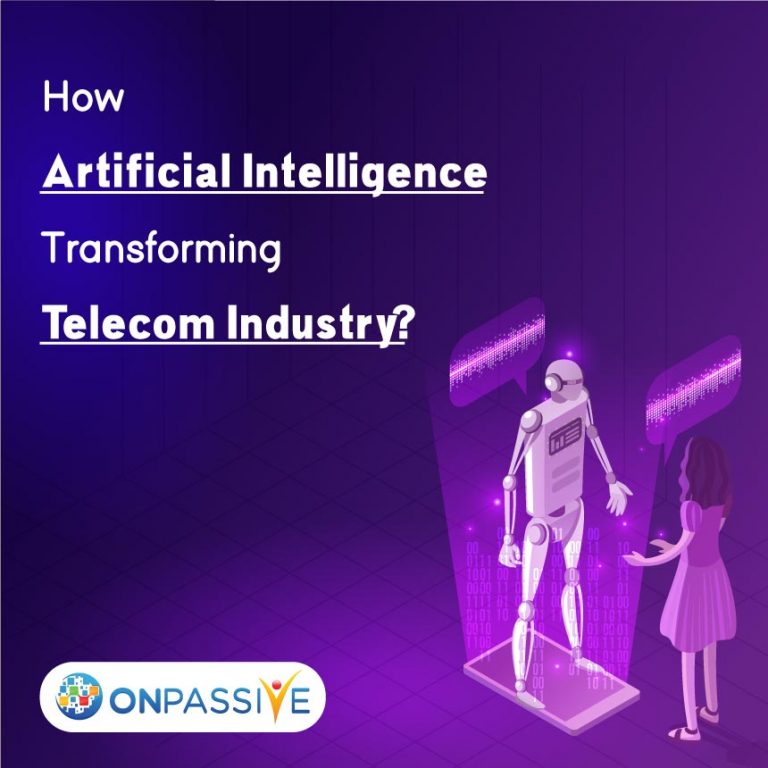
The use of AI in telecom increasingly becoming popular.
AI and Telecoms
No longer limited to providing primary phone and internet service, the telecom industry is at the epicentre of technological growth, led by mobile and broadband services in the Internet of Things (IoT) era. This growth expected to continue forecasting with the global telecom IoT market by posting an impressive CAGR with more than Fourth-Two percentage by the end of this year.
Growth of Driver in Artificial Intelligence
An Added Value that AI offers Telecommunication Company
Nowadays, communications service providers (CSPs) are facing increasing demands for higher quality services and better customer experience (CX).
Telecommunications are capitalizing on these opportunities by leveraging the vast amounts of data collected over the years from their massive customer bases, and this data obtained from
- Device
- Network
- Mobile application
- Geolocations
- Detailed customer profile
- Service usage and billing data.
Telecommunications also harness the power of AI that process and analyze such huge volumes of Big Data by extracting actioned insights and provides better customer experiences and improves operations with increased revenues through new products and service.
The four AI Use Cases for the telecommunications industry:
CSPs have focused AI investments on four main areas:
1. Network optimization
2. Preventive maintenance
3. Virtual Assistants
4. Robotic Process Automation
In these areas, AI has begun to deliver tangible business insights.
AI Networks Optimizations
AI is essential for helping CSPs in building self-optimizing networks (SONs), which gives operators the ability to optimize automatic network qualities based on traffic information with region and time zones.
Artificial Intelligence applications in telecommunications industry use advanced algorithms for their patterns within the data, enabling both detecting and predicting network anomalies, and allowing them to fix problems before customers negatively impacted with reactiveness.
Some of the famous AI use-cases in telecom network includes:
ZeroStack’s ZBrain Cloud Managements, which analyzes private cloud telemetry storage used for improving capacity planning’s, upgradations and general management.
Aria Networks, an AI-based network optimization solutions that counts a growing number of Tier-1 telecom companies as customers.
Sedona Systems NetFusion which optimizes the routing of traffic and speed deliveries of 5G-enabled services such as Augmented Reality/Virtual Reality.
Nokia launched its machine learning-based AVA platform, a cloud-based network management solution to manage capacity planning better and to predict service degradations on cell sites up to seven days in advance.
AI for Predictive Maintenance
AI-driven predictive analytics is helping telecommunications provide better services by utilizing data, sophisticated algorithms and machine learning techniques for predicting future results based on historical data.
It means the operator uses data-driven insights are monitoring the state-of-equipment and anticipating failures with patterns and fix problems proactively with communications hardware such as
- Cell towers
- Power lines
- Datacenter servers
- Set-top boxes in customer home.
In a short time, network automation and intelligence will enable better root cause analysis and prediction issues.
In a Long time, these technologies will underpin more strategic goals, such as creating new customer experiences dealing efficiently with emerging business needs.
Using Preventive maintenance to help customers
Preventive maintenance is useful not only on the network side but also on the customer’s side.
Virtual Assistant for Customer Supports
Another application for AI in telecommunications is conversational AI platforms. Also known as virtual assistants that have learned to automate and scale one-on-one conversations effectively that they projected to cut business expenses as much as eight billion dollars annually by 2022.
Telecommunications have turned to virtual assistants to help contend with a massive number of support requests for installations, set-up, troubleshooting and maintenance which often overwhelm customer service centres.
With AI, operators implement a self-service capability that shows customers installing and operating their gadgets.
Voice assistants such as Telefonica’s Aura designed for reducing customer service cost generated by phone follow-ups.
Comcast also introduces a voice remote that allows customers to interact with their Comcast system through natural speech. Similarly, DISH Network’s partnership with Amazon’s Alexa enables customers to search or buying media content by spoken words instead of remote controls.
Integrating visual support within IVR enable more time-efficient interactions by reducing Average Handling Time (AHT) and Customer Hold Time (CHT), and driving ultimate customer experience.
These will be the five strategies for improving the customer experience for telecom customers.
RPA for Telecommunications
CSPs have a vast number of customers engaged in millions of daily transactions, each susceptible to human errors.
RPA is a business process automation technology on AI. It brings greater efficiency to telecommunications functions by allowing us to manage their back-office operations and large volumes of repetitive and rules-based actions.
It streamlines the execution of complex, labour-intensive and time-consuming processes such as billing, data entry, workforce management and order fulfilment.
RPA free-up CSPs staff for higher value-added works.
Celaton helps telecommunications streamline inbound data, such as emails, web forms and posts, extracting and validating critical data from each correspondence and presenting suggested responses to service reps, who then amend messages before responding to customers. Meanwhile, Kryon assists operators with identifying key processes to automate in support of both digital and human workforces for optimal efficiency.
Future of AI in Telecom
Artificial Intelligence application in the telecommunications industry is increasingly helping CSPs to manage, optimizing and maintaining not only infrastructures but also customer support operations.
Networking optimizations, predictive maintenance, virtual assistants and RPA are all the examples of use cases where AI has impacted the telecom industry by delivering enhanced CX and added values for enterprise.
Big Data tools and application becomes more available and sophisticated; AI expects to continue with accelerate growth in such highly competitive space. Latest Developments in Artificial Intelligence


